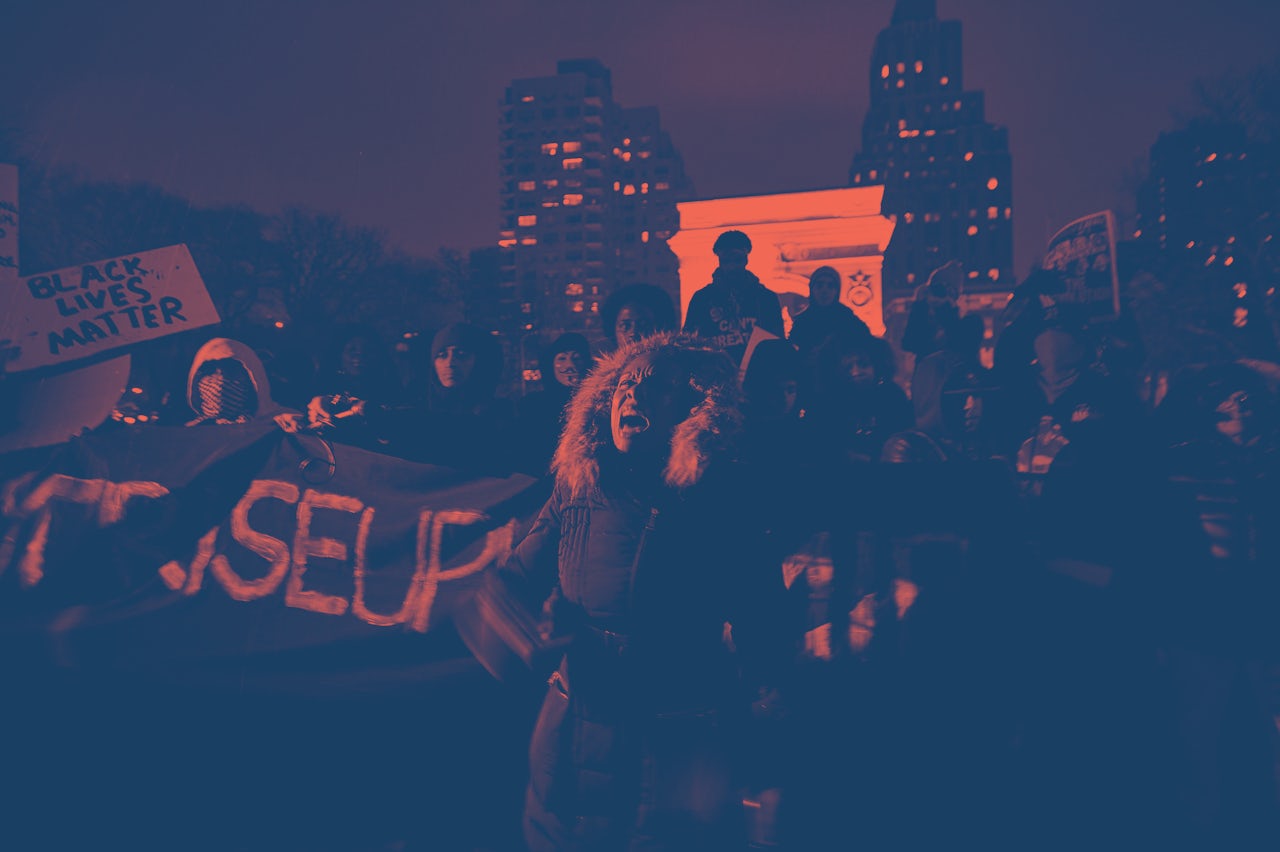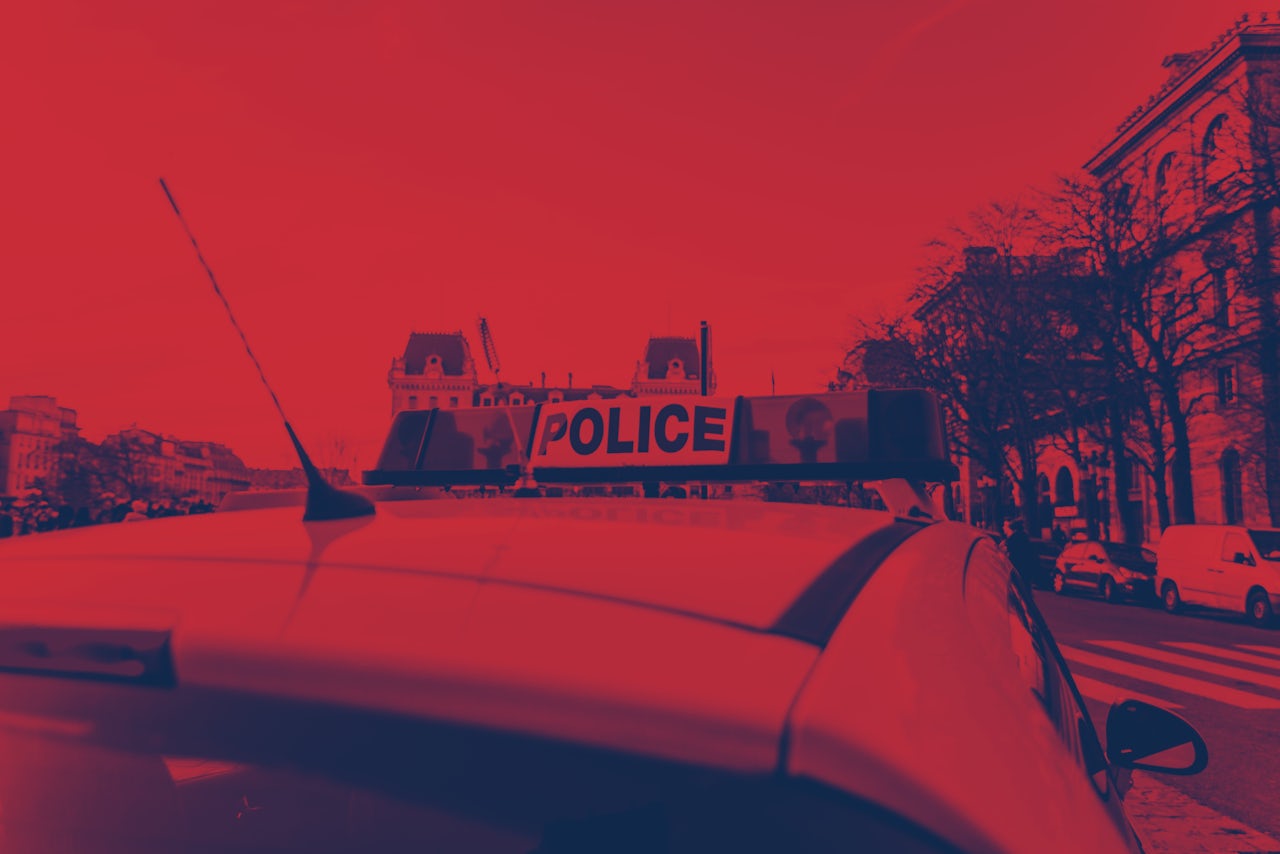Arminta Jeffryes was crossing the Brooklyn Bridge on foot at 8 p.m. on December 28, 2015, surrounded by about 100 other demonstrators protesting the decision by an Ohio grand jury not to indict the officers who shot and killed 12-year-old Tamir Rice. A fellow organizer mentioned to Jeffreys that her iPhone had started to power down when she tried to send a text or make a call; a few minutes later, Jeffreys’ phone did the same, then her screen did something it had never done before, turning completely white. “Shit,” she thought. “They’ve got me, too.”
Beginning with the Rice action, Jeffryes and other activists affiliated with the Black Lives Matter movement say that they experienced phone problems at other events, too, causing them to take more precautions in their communications around organizing, and fostering a sense of discomfort and paranoia. “That day is when everything [changed],” Jeffryes told The Outline. She and other organizers shared previously unreported details about the incident and its aftermath.
“After that protest,” she said, “our phones have just been so fucked up, pardon my language.”
The NYPD is one of a number of police departments across the country — the exact figure is not known — that quietly owns and uses devices called ISMI catchers. These devices, commonly known as Stingrays, act like cell phone towers and trick phones into interacting with them. They can track a person’s location, intercept data from phones including text and voice communications, drain batteries and disrupt service. Stingrays have a range of one to two city blocks, making them particularly effective against protesters; by targeting one person, cops can grab data from anyone who happens to be nearby.
The NYPD refuses to even publicly acknowledge that it owns Stingrays, but a 2016 ACLU report revealed that the department had used the devices “nearly 1,016 times between 2008 and May of 2015 without a written policy and following a practice of obtaining only lower-level court orders rather than warrants.” Legislators have begun to push back against the secret surveillance, passing transparency laws in Seattle and Santa Clara, California.
“Shit,” she thought. “They’ve got me, too.”
According to the ACLU, approximately 17 other localities are working on similar legislation, including New York, where city council members Dan Garodnick and Vanessa Gibson last month introduced the Public Oversight of Surveillance Technology (POST) Act. The bill would require the NYPD to disclose all of the high-tech surveillance tools that it uses, along with how it shares and protects the information that it gathers.
“Civilians are in charge of the police force, not the reverse,” Garodnick told The Outline last month. “And these surveillance technologies are too frequently not only used in secret, but they are being acquired in secret.”
When Garodnick and Gibson announced the bill, the NYPD reacted angrily. “We oppose it strongly. We think it’s a very bad idea,” deputy commissioner for legal matters Larry Byrne said. “It would require us to disclose all sorts of confidential information about how these lawful surveillance techniques work.”
With the police so opposed to discussing its Stingray use, there is no way to know with certainty if they employed the technology on the night of the Tamir Rice action. Informed of the organizers’ experiences, Mariko Hirose, a senior staff attorney at the New York Civil Liberties Union, told The Outline she couldn’t say definitively that Jeffryes’ experience was a result of Stingray use, but that it certainly could have been. "Stingrays can interfere with service and certain models can be used for blanketed or targeted denials of service,” she said.
At least four other main organizers in addition to Jeffryes, as well as multiple demonstrators at the Tamir Rice action experienced phone issues (the other organizers either did not want to be named or did not respond to interview requests, but sources confirmed the details of their experiences). One person said that their battery instantly drained from 60 percent to zero, and shut down. None of the organizers were able to use their phones for the remainder of the action as the group marched across the bridge and into Brooklyn.
As the phone disruptions began, demonstrators on the walkway of the bridge noticed an increased presence of NYPD vehicles on the road — not just police cars, but vans and Town Cars. The organizers had been coordinating their actions with a group text, and could no longer so do.
“We would be texting someone the location of where to meet us or something, but by the time we would try to press send, our phones would be turning off,” Jeffryes said. “And then we were trying to get it to turn back on. We would turn it on and it would give us the white screen. We couldn’t make phone calls either. We couldn’t do anything on our phones for the whole protest.”
“It was kind of like we were stranded. It was just weird.”
One demonstrator approached the organizers for help, and the organizer gave her a portable charger, expecting that the phone would turn back on. It did, but then shut off, then turned on, then shut off again, in total 10 or 11 times. The core group of five organizers huddled, then addressed the demonstrators.
“Put your phones away,” they said, “because at this point we don’t know what to do or how to handle this.”
Later in the evening, once the demonstration was over and the participants would have been out of the range of a Stingray, the organizers’ phones began working normally again. But from that day on, the disruptions would intermittently recur, particularly during marches and other actions, Jeffreys said.
"We couldn’t do anything on our phones for the whole protest.”
Those inconveniences, along with the organizers’ assumption that they were being watched, not only had a psychological effect, but made it much more difficult for the group to carry out its work. “It definitely changed everything,” Jeffryes said.
In theory, police could have used the Stingrays that night to collect phone ID numbers which would lead to names, and seek a warrant for continued monitoring of the demonstrators. There is no evidence that this occurred here, but the paranoia felt in the wake of the Rice action is informed by a long history of government surveillance of African-Americans from Martin Luther King Jr. to prominent BLM activist Deray Mckesson.
In light of that context, organizers stopped using group texts to discuss operational details after the experience at the Rice action. They simply texted the address of a meeting, and upon arriving took various measures to protect their privacy: Wrapping their phones in aluminum foil, which blocks cell signals, and putting them in the refrigerator or freezer, the walls of which can block audio surveillance. The group would then meet in a different room.
For a group composed of many students and others trying to pursue social justice while also making a living, it was often impractical to spend money on a new phone. Most activists simply dealt with the new reality, as Jeffryes did until finally replacing her phone more than a year after the Rice action. That device has so far worked normally, but she will never forget what happened on December 28, 2015.

